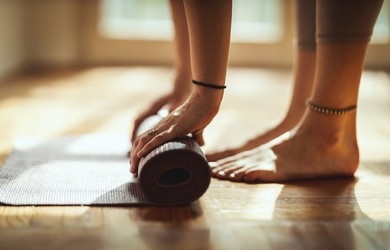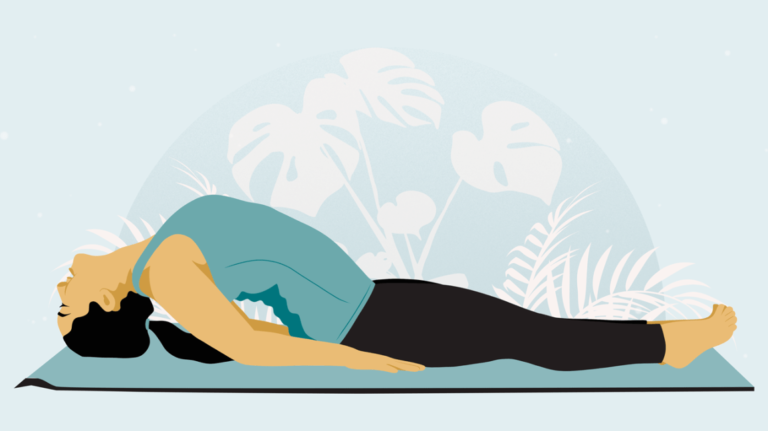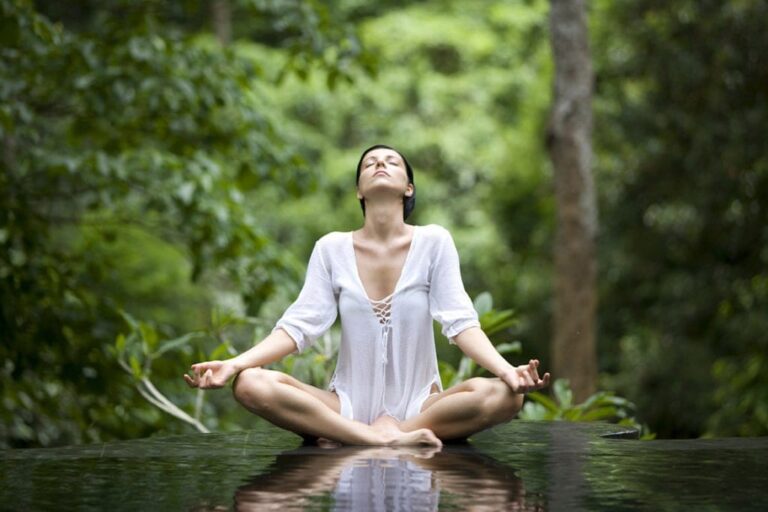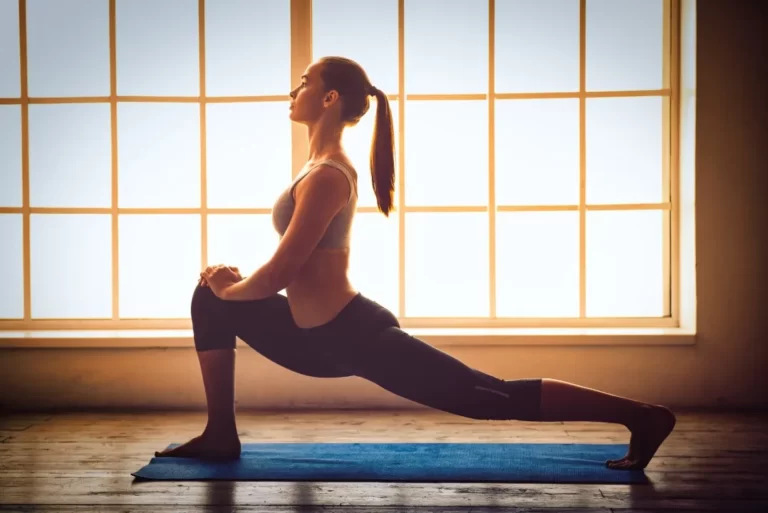
Yoga Turkey Pose
Yoga is a centuries-old practice that combines physical postures, breathing techniques, and meditation to promote overall health and well-being. One of the poses that can provide numerous benefits to the body and mind is the Yoga Turkey Pose , also known as the Prasarita Padottanasana.
Overview of the Turkey Pose
The Yoga Turkey Pose is a standing forward bend that stretches the hamstrings, calves, hips, and spine. It also strengthens the legs, core, and upper body, while improving balance, posture, and coordination. The pose is named after the posture of a turkey, which often lowers its head and spreads its wings to display its feathers. The Turkey Pose can be practiced by beginners and advanced yogis alike, and can be modified or intensified to suit different levels of flexibility and strength.
What is the Yoga Turkey Pose?
The Yoga Turkey Pose is a standing forward bend pose that is typically practiced at the beginning of a yoga class or as part of a sequence. It involves a wide stance with the feet hip-distance apart, folding forward from the hips, and placing the hands on the floor or blocks.
Benefits of Practicing yoga Turkey Pose
The Turkey Yoga Turkey Pose a range of benefits to the body and mind. These include:
- Stretching and strengthening the legs, hips, and spine
- Stimulating the abdominal organs and improving digestion
- Calming the mind and reducing stress
- Enhancing balance and stability
- Relieving tension in the neck and shoulders
How to Do the yoga Turkey Pose?
Before attempting the Yoga Turkey Pose , it is important to warm up the body with some preparatory poses such as downward-facing dog, sun salutations, or standing poses like warrior II.
Step-by-Step Instructions
- Stand with your feet hip-distance apart and parallel to each other.
- Inhale and lengthen your spine, reaching the crown of your head towards the ceiling.
- Exhale and fold forward from your hips, bringing your torso towards your thighs.
- Keep your legs active and engage your quadriceps muscles by lifting the kneecaps.
- Place your hands on the floor or blocks, shoulder-width apart.
- Relax your neck and let your head hang heavy.
- Stay in the pose for 5-10 deep breaths.
- To come out of the pose, inhale and lift halfway up with a flat back, then exhale and release.
Modifications and Variations
If you have tight hamstrings or lower back pain, you can modify the pose by bending your knees slightly or placing your hands on your shins instead of the floor.
For a deeper stretch, you can clasp your hands behind your back and lift them towards the ceiling, or interlace your fingers behind your back and fold forward.
Common Mistakes to Avoid
- Avoid rounding your spine or collapsing your chest. Keep your chest open and your shoulders away from your ears.
- Avoid locking your knees or hyperextending your elbows. Keep a slight bend in your knees and elbows to protect your joints.
- Avoid pushing yourself too far too soon. Listen to your body and respect your limits.
Precautions and Contraindications
- If you have a lower back injury, herniated disc, or sciatica, consult your doctor or a qualified yoga teacher before practicing this pose.
- If you have high blood pressure, glaucoma, or any other medical condition, check with your doctor before practicing this pose.
Yoga Turkey Pose Variations
Once you feel comfortable with the basic version of the Yoga Turkey Pose you can try some of these variations to challenge your body and mind:
Flying Turkey Pose
This variation involves lifting one leg off the ground while keeping the other foot firmly planted on the floor. It strengthens the legs and improves balance.
Twisted Turkey Pose
This variation involves twisting the torso to one side while keeping the hips and legs in the same position. It stimulates the internal organs and improves digestion.
Bound Turkey Pose
This variation involves clasping your hands behind your back and folding forward. It stretches the shoulders and chest and improves posture.
Yoga Turkey Pose for Different Skill Levels
The Yoga Turkey Pose can be modified and adapted to different skill levels:
Beginner’s Level
If you are new to yoga or have limited flexibility, start with a wider stance and place your hands on blocks or a chair to reduce the intensity of the stretch.
Intermediate Level
If you have been practicing yoga for a while and feel comfortable with the basic pose, try adding the flying or twisted variations to challenge your balance and focus.
Advanced Level
If you are an experienced yogi and want to take the pose to the next level, try binding your hands behind your back and folding forward, or adding a twist and a leg lift at the same time.
The yoga Turkey Pose and Chakra Activation
In yoga, the chakras are energy centers located along the spine that correspond to different aspects of our physical, emotional, and spiritual well-being. The Turkey Pose can activate and balance the following chakras:
Root Chakra
The root chakra is located at the base of the spine and represents our sense of grounding and stability. The Turkey Pose can activate this chakra by connecting us to the earth and grounding our energy.
Sacral Chakra
The sacral chakra is located in the lower abdomen and represents our creativity and sensuality. The Turkey Pose can activate this chakra by stimulating the reproductive organs and increasing blood flow to the pelvic area.
Solar Plexus Chakra
The solar plexus chakra is located in the upper abdomen and represents our personal power and self-esteem. The Turkey Pose can activate this chakra by strengthening the core muscles and Can the Turkey Pose help with anxiety and depression?
The Turkey Pose can help calm the mind and reduce stress and anxiety by promoting deep breathing and relaxation. It can also help improve mood and self-esteem by strengthening the core and upper body. However, if you have a history of depression or other mental health conditions, it is best to consult your doctor or a qualified mental health professional before practicing this pose
Conclusion
The Yoga Turkey Pose is a versatile and beneficial yoga pose that can help you stretch, strengthen, and balance your body and mind. Whether you are a beginner or an advanced practitioner, there are many variations and modifications you can try to suit your skill level and goals.
FAQs
Is the yoga Turkey Pose suitable for everyone?
The Turkey Pose can be practiced by most people, but it may not be suitable for those with lower back pain, herniated disc, sciatica, high blood pressure, or glaucoma. Always check with your doctor or a qualified yoga teacher before starting a new yoga practice.
Can I practice the yoga Turkey Pose during pregnancy?
If you are pregnant, it is best to avoid deep forward bends like the Turkey Pose after the first trimester.
Continue writing please
Apologies, let me continue writing in English:
How long should I hold the yoga Turkey Pose ?
You can hold the Turkey Pose for 5-10 breaths, or longer if you feel comfortable. Remember to breathe deeply and evenly throughout the pose, and release it gently when you are ready.
What are the benefits of the yoga Turkey Pose ?
The Yoga Turkey Pose has many benefits for the body and mind, including:
- Stretches the hamstrings, calves, hips, and spine
- Strengthens the legs, core, and upper body
- Improves balance, posture, and coordination
- Stimulates the digestive and reproductive systems
- Calms the mind and relieves stress and anxiety
Can the yoga Turkey Pose help with back pain?
The Turkey Pose can help relieve mild to moderate back pain by stretching and strengthening the muscles that support the spine. However, if you have a serious back injury or condition, it is best to consult your doctor or a qualified yoga teacher before practicing this pose.
How can I modify the yoga Turkey Pose if I have knee pain?
If you have knee pain or discomfort, you can place a folded blanket or towel under your knees for extra cushioning, or p
ractice the pose with a wider stance and a smaller bend in the knees. You can also try the Flying Turkey Pose variation, which puts less pressure on the k


